With new flooring, you’re not just thinking about how it looks; you want to know how long it’s going to last. Acrylic floors have a reputation for being tough, but their lifespan depends on where and how you use them. At Valley Concrete Coatings & Polishing, in Phoenix, AZ, we help customers determine which flooring systems match their real-world needs, not just the spec sheet.
This article will explore how long acrylic flooring holds up in everyday conditions.
What Acrylic Flooring Is and How It Stands Apart from Epoxy
Acrylic flooring typically refers to coatings made from water-based or solvent-based acrylic resins. These coatings form a protective film over concrete and other surfaces by drying rather than chemically curing like epoxies. Acrylic is often used as a topcoat or part of a multilayer system and is valued for its fast dry time, UV resistance, and ease of application.
While not as thick or impact-resistant as epoxy, an acrylic overlay offers a durable surface that resists moisture and staining when used in the right setting. It is often used in garages, basements, and light-duty indoor spaces.
Epoxy flooring, by contrast, is a reactive resin system that cures through a chemical process. It forms a thick, hard, and extremely durable surface that can handle heavy mechanical wear, chemicals, and sustained foot traffic. However, epoxy takes longer to cure and can be more sensitive to moisture during installation.
One key difference is flexibility. Acrylic coatings are more forgiving in environments with temperature swings because they have more elasticity and allow the surface to expand and contract. They’re also easier to touch up or recoat down the road, making them appealing for residential projects where future maintenance might be a concern. The right choice depends on how much abuse the floor will take, how quickly the space needs to be ready, and whether UV exposure or long-term wear is the bigger concern.
Foot Traffic and Daily Wear Have a Big Say
Where your floor is and what it sees daily will always affect how long it holds up. Acrylic flooring in a quiet home office or finished basement might look the same five or ten years after installation. But the wear shows up faster in a kitchen or workshop where people walk constantly or drop heavy tools. Acrylic resists scratches, but it’s not invincible. Dragging furniture or using the floor for a work surface can scuff the top layer or wear down the surface finish.
In high-traffic spots, that wear builds gradually. You might notice shine fading or edges that look duller. That doesn’t mean the material failed; it just reflects how it’s used. In low-use areas, you might not see any noticeable changes for years. But if your floor sees steady foot traffic or the regular movement of carts, tools, or equipment, the surface may need touch-ups sooner. In these environments, the lifespan of acrylic flooring depends on how often it’s used and the level of physical stress it takes on over time.
Moisture and Temperature Can Shorten or Extend Lifespan
Acrylic floors handle spills and splashes well, but prolonged exposure to moisture can still cause damage. If water is left standing for too long, or if the surface underneath wasn’t properly sealed or prepped, you might see bubbling, peeling, or spots where the coating lifts away from the surface. These problems show up more often in garages, around pools, or spaces with poor drainage or limited ventilation.
Temperature fluctuations also play a role. Acrylic tends to handle expansion and contraction better than some other coatings, but constant extremes, like sun-baked surfaces in the summer or frigid floors in the winter, can take a toll. Over time, the surface may lose adhesion, develop cracks, or wear unevenly.
If your floor is in a well-ventilated, climate-controlled area and rarely sees standing water, it’s likely to last longer. In contrast, floors exposed to regular puddles, humidity, or a lot of sun may need touch-ups or recoating sooner. The quality of the installation matters too. If the surface wasn’t properly prepared or the coating didn’t cure under the right conditions, premature wear is likely.
Cleaning Habits Make a Difference Over the Years
How you care for acrylic flooring after installation has a major impact on its lifespan. Dirt and grit work like sandpaper; when ground underfoot, they gradually scratch the surface. These micro-scratches not only dull the appearance but also trap more dirt and moisture, accelerating wear over time.
Using harsh cleaning chemicals or stiff tools can also shorten the life of the finish. While acrylic is tough, it’s not immune to damage from abrasive pads or ammonia-based cleaners, which can quickly strip away the surface sheen. In contrast, regular sweeping and gentle mopping with a pH-neutral cleaner helps maintain the floor’s appearance and protect the top layer from early wear.
Even with good habits, high-traffic areas may still need a fresh topcoat every few years. That kind of upkeep helps preserve the base layer and extends the overall lifespan of the floor. A little routine care can go a long way in keeping acrylic floors looking and performing their best.
Installation Quality Matters
Acrylic flooring performs best when it’s installed under the right conditions. Temperature, humidity, and surface preparation all play critical roles. If the concrete wasn’t clean, dry, or properly primed, the acrylic might not bond the way it should. That can lead to problems like peeling, bubbling, or delamination. In some cases, those issues show up within the first year. In others, they develop slowly after seasonal shifts or regular use exposes weak spots.
Improper curing is another concern. If the installer rushed the job or didn’t give each layer enough time to set, the surface may wear down faster or never reach full hardness. These shortcuts might not be obvious at first, but they almost always reduce the floor’s long-term durability.
A professional flooring installation ensures that the acrylic bonds evenly and performs the way it’s designed to. It will resist wear, handle humidity well, and adapt to temperature changes. For homeowners, this means fewer problems and longer-lasting performance.
If you move into a home and aren’t sure who installed the acrylic floor or how well it was done, watch for signs like uneven coloring, soft spots, or patches where the coating feels loose or rough. These clues can help you decide whether the floor just needs maintenance or if it’s time to replace it entirely.
Contact Your Local Acrylic Flooring Experts
At Valley Concrete Coatings & Polishing, we’ve been helping homeowners and businesses across Phoenix, AZ, and the surrounding areas since 2014. Acrylic flooring can hold up for years without major issues when installed correctly and cared for based on how the space is used.
If you’re considering new flooring and want to know whether acrylic is the right choice, our team can walk you through the pros, cons, and other options to fit your needs. In addition to acrylic systems, we also provide expert concrete surface prep, epoxy flooring, and decorative flake systems to give your space a clean, durable finish that lasts.
Contact us today to schedule an appointment with one of our experienced team members.










